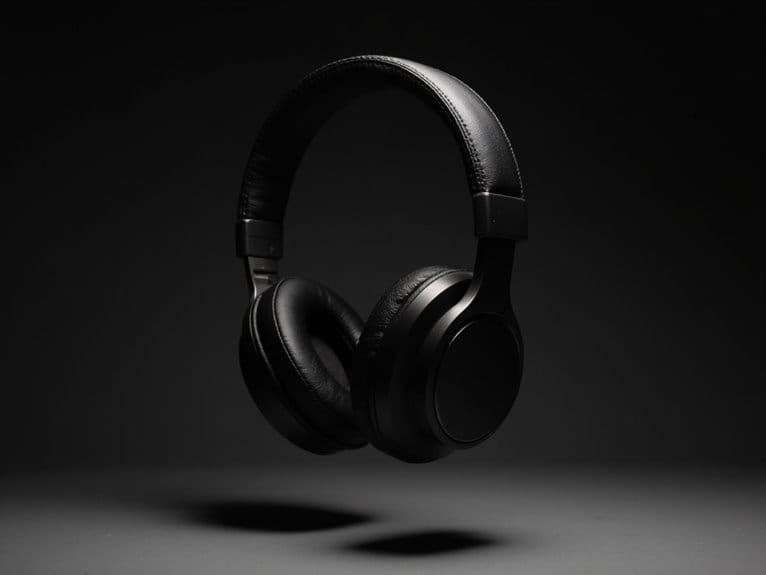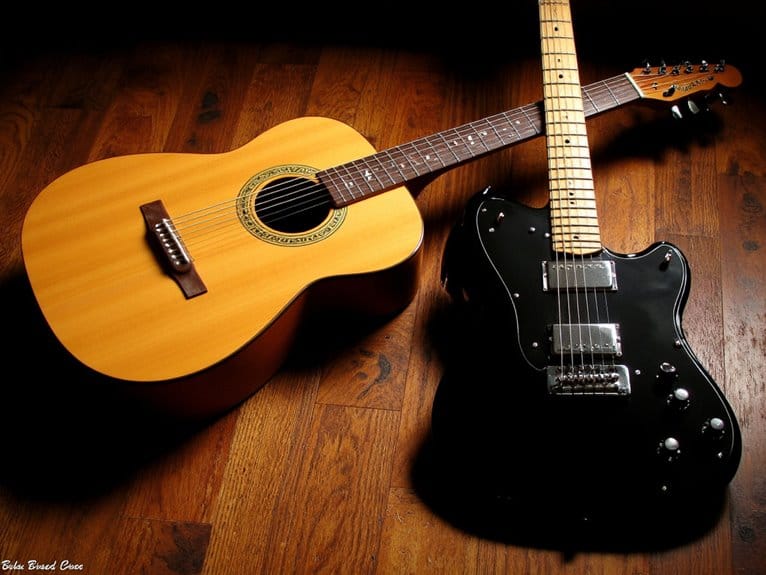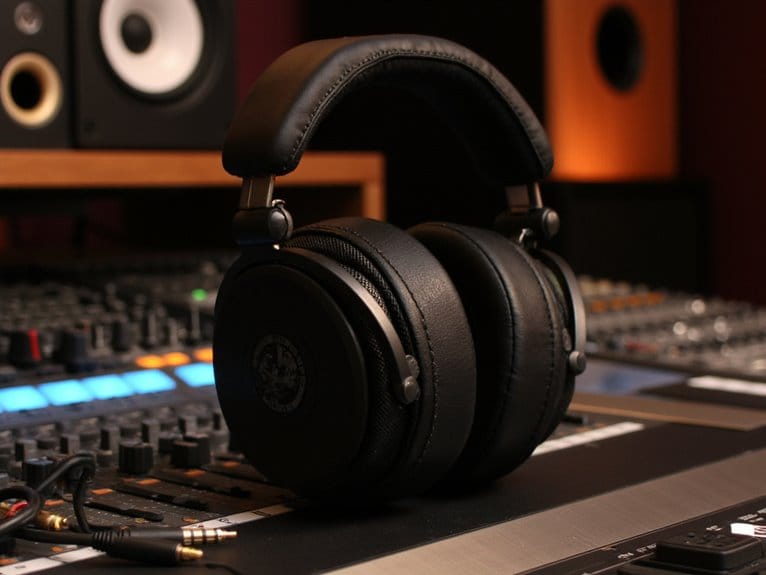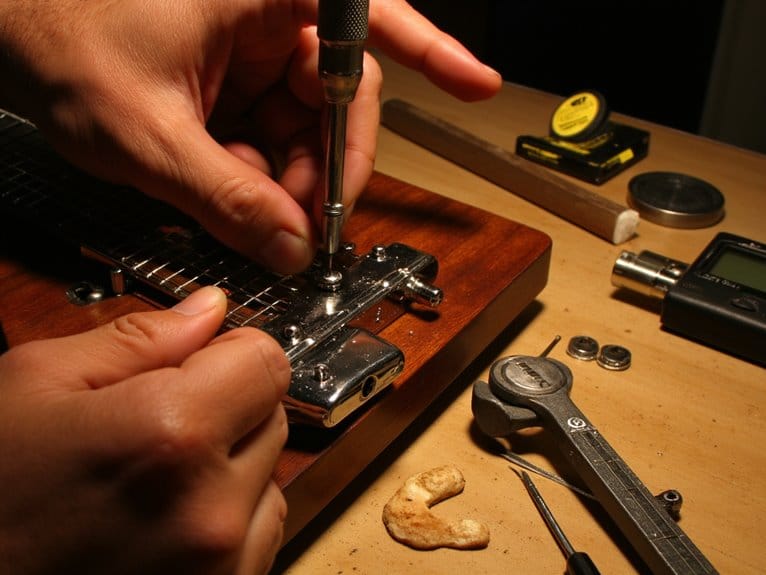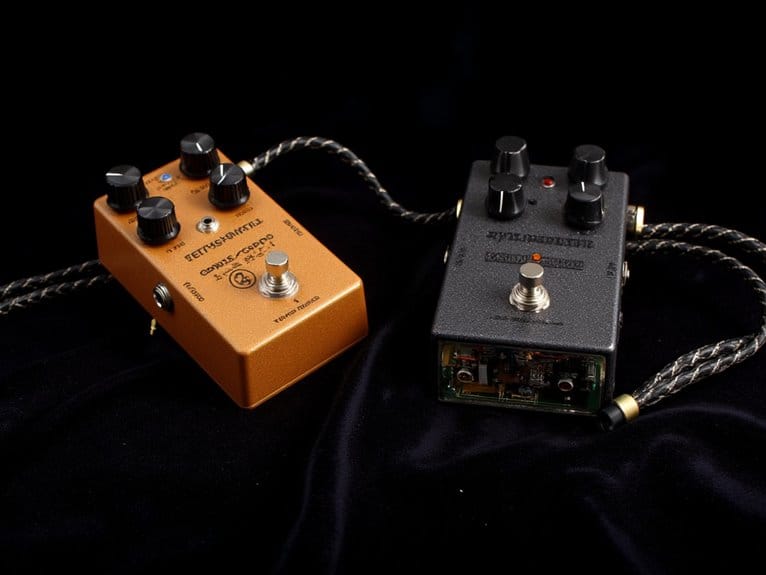Noise-Canceling Headphones: How They Work and When to Use Them
Noise-canceling headphones work by using microphones that sample ambient sound over 300,000 times per second, then generate precise inverse sound waves through destructive interference to cancel unwanted noise. You’ll find them most effective against steady, low-frequency sounds like airplane engines, achieving up to 90% noise reduction, though they struggle with high-frequency sounds above 1,000 Hz. They’re ideal for flights, commutes, and open offices, but wind can interfere with performance. Understanding these technical nuances will help you maximize their potential.
We are supported by our audience. When you purchase through links on our site, we may earn an affiliate commission, at no extra cost for you. Learn more.
Notable Insights
- Noise-canceling headphones use destructive interference, generating inverse sound waves through digital signal processing to cancel ambient noise.
- Active systems require battery power and excel at eliminating steady, low-frequency sounds like airplane engines and air conditioning.
- Passive cancellation relies on physical materials alone, while hybrid systems combine multiple microphone placements for optimal performance.
- Best used during flights, commutes, open offices, and study sessions where consistent background noise needs reduction.
- High-frequency sounds above 1,000 Hz remain challenging to cancel, and wind interference can affect microphone performance.
The Science Behind Active Noise Control Technology
When I first encountered noise-canceling headphones years ago, I’ll admit I was skeptical about how they could seemingly make sound disappear into thin air.
But the underlying science is actually quite elegant in its simplicity. The technology relies on destructive interference through phase inversion, where your headphones create an inverse sound wave that’s exactly out of phase with incoming noise. This precise cancellation of noise allows listeners to experience audio without distractions, enhancing clarity and detail in their music. Moreover, understanding headphone soundstage plays a crucial role in providing an immersive listening experience, as it helps to create the illusion of space and dimension in sound. By accurately positioning sounds throughout this virtual space, listeners can enjoy a more engaging and lifelike auditory environment.
When the original noise waveform combines with this inverted signal, they mathematically cancel each other out, reducing the sound pressure variations that would normally reach your eardrums.
Advanced digital signal processing analyzes ambient noise in real-time, generating precise anti-noise signals that adapt to changing environments, making modern ANC systems remarkably effective at neutralizing steady, low-frequency sounds. Machine learning integration has further enhanced the performance of these systems, allowing them to better adapt to varying noise conditions and improve overall effectiveness.
These headphones excel at eliminating periodic sounds like airplane engines and air conditioning units, which produce consistent, predictable waveforms that the system can easily counteract. Premium models like the Sony WH-1000XM6 feature up to 12 microphones for superior noise reduction performance. Modern noise-canceling headphones utilize multiple microphones to enhance their noise isolation capabilities, with some premium models featuring up to eight microphones for superior performance.
Essential Components That Make ANC Possible
The magic of active noise cancellation doesn’t happen through wishful thinking-it’s the result of five critical components working in precise harmony, each one essential to creating that blissful bubble of silence you experience when you flip the ANC switch.
Microphone placement forms the foundation, with external sensors sampling ambient noise over 300,000 times per second while internal mics monitor leakage. The ANC chipset processes this data, generating inverse waveforms that neutralize unwanted frequencies.
Speaker design determines how effectively these anti-noise signals combine with your audio, while the battery keeps everything running continuously. Finally, acoustic materials and ear cup seals provide the physical barrier that complements the electronic wizardry happening inside.
Different Types of Noise Cancellation Systems
When you’re shopping for noise-canceling headphones, you’ll encounter several distinct approaches to blocking unwanted sound, each with its own strengths and technological complexity.
The fundamental divide exists between passive noise cancellation, which relies purely on physical materials to create a sound barrier, and active systems that use electronic processing to generate counteracting sound waves.
Beyond this basic distinction, manufacturers have developed hybrid and adaptive technologies that combine multiple microphone placements and real-time adjustments, offering increasingly sophisticated solutions for different listening environments and user preferences.
Top-performing hybrid ANC systems can achieve up to 90% ambient noise reduction by combining both passive and active cancellation technologies with multiple built-in microphones for optimal sound blocking performance.
Budget-friendly options now deliver impressive noise reduction capabilities, with some models offering specialized ANC modes that can filter out 95% of low-frequency sounds while maintaining competitive performance compared to premium alternatives. These advancements mean that audiophiles on a budget can enjoy a more immersive listening experience without breaking the bank. Additionally, some of these models are designed in a way that caters to users who require monitoring headphones, making them ideal for recording and mixing sessions. As technology continues to evolve, it’s likely that we will see even more enhancements in the noise reduction features of affordable headphones.
Active Vs Passive
Although both active and passive noise cancellation systems aim to reduce unwanted sound, they accomplish this goal through fundamentally different approaches that I’ve found can dramatically affect your listening experience depending on the situation.
The active benefits include superior noise reduction averaging 30dB, real-time adjustments through microphone detection, and exceptional performance against steady, low-frequency sounds like airplane engines. However, passive drawbacks become apparent when you consider their limited effectiveness against variable frequencies and reliance solely on physical ear sealing.
Here’s what sets these technologies apart:
- ANC generates opposing sound waves while passive relies on cushioning
- Active systems require battery power, passive systems don’t
- ANC excels at steady sounds, passive struggles with high frequencies
- Active allows flexibility with on/off switching
- Passive provides more natural, pure sound quality
Hybrid ANC Systems
While single-method ANC systems certainly have their merits, I’ve discovered that hybrid ANC represents the gold standard in noise cancellation technology, combining both feedforward and feedback microphone systems to tackle unwanted sounds across an impressively extensive frequency spectrum.
This hybrid functionality places external microphones to catch ambient noise before it reaches your ears, while internal microphones monitor residual sounds that slip through, creating a thorough defense system that adapts to various environments and fit variations.
The ANC evolution has culminated in adaptive variants that use machine learning algorithms to continuously optimize performance in real-time, adjusting cancellation strength based on your surroundings and movement patterns.
Though you’ll pay a premium for this sophisticated dual-microphone approach, the superior noise suppression and reduced artifacts make it worthwhile.
Frequently Asked Questions
Do Noise-Canceling Headphones Cause Ear Pressure or Headaches?
Yes, you’ll likely experience ear pressure from ANC technology creating anti-noise waves. This can cause ear discomfort and headaches, especially if you have pressure sensitivity. Taking breaks helps reduce these effects.
Can I Wear Noise-Canceling Headphones During Exercise or Sports?
You can wear noise-canceling headphones during exercise, but watch for performance issues with secure fit during movement. Consider sound awareness needs – use transparency modes outdoors for safety while maintaining workout focus indoors.
On a final note
You’ll find that noise-canceling headphones aren’t magic solutions, but they’re remarkably effective tools when you understand their strengths and limitations. Whether you’re commuting, working, or traveling, choosing the right ANC system depends on your specific needs, budget, and listening preferences. Don’t expect them to eliminate every sound, but they’ll greatly reduce consistent background noise, letting you focus on what matters most to you.

